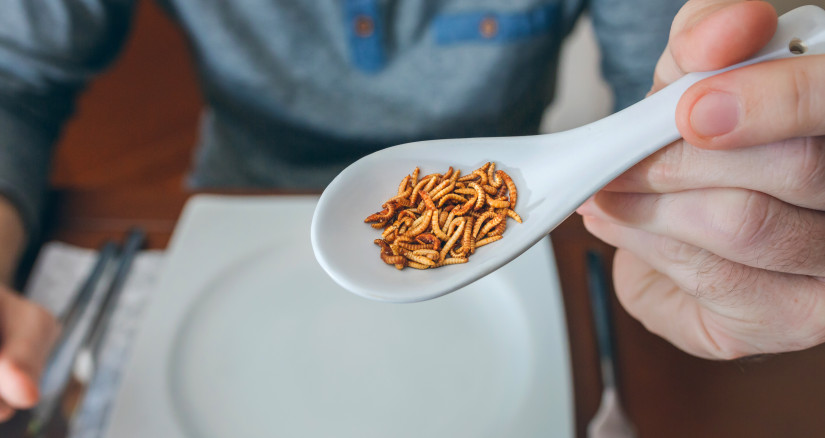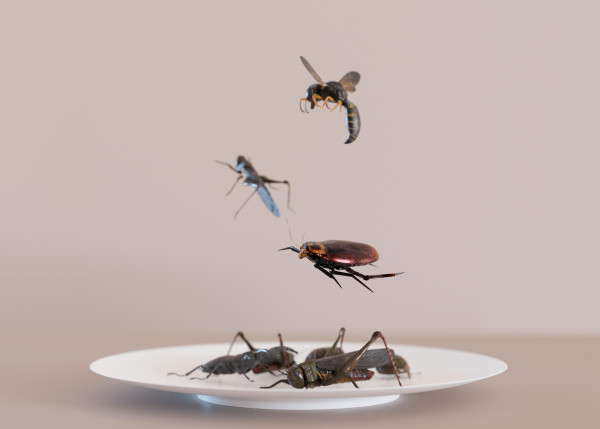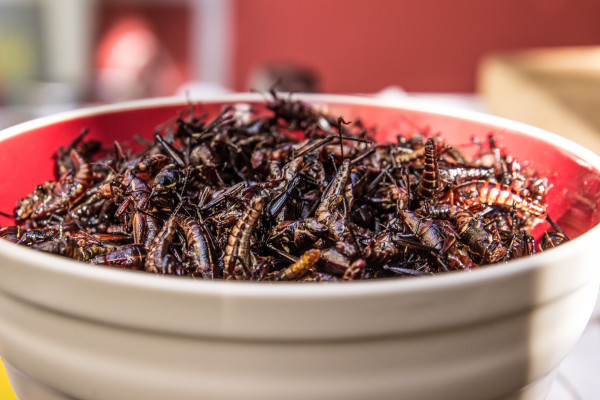
Creepy Crawly Cuisine: When Banning Synthetics Comes with Tradeoffs
Earlier this year, the US Food and Drug Administration (FDA) officially banned a common synthetic dye used in food, beverage, and ingestible drug products—Red No. 3. Manufacturers have been given two years, until Jan. 15, 2027, to reformulate products containing this dye—or face regulatory ramifications. Other synthetic food dyes, including FD&C Red 40, Yellow 5 and 6, Blue 1 and 2, Green 3, Citrus Red 2, and Orange B, are also on the chopping block.
This news comes as part of a larger push to move away from petroleum-based synthetics and toward more natural, eco-friendly ingredients in our food. We've already seen this shift begin to manifest in the pet food industry with the rise of natural, upcycled ingredients, protein alternatives, and insect-based diets.
It seems the great synthetic reckoning has begun, but as we enter this new, more natural era, it's important to remember that with each step toward better nutrition and environmental stewardship, there will be tradeoffs.

Photo by kasiopeja999
Insects: It’s What’s for Dinner!
For example, did you know one of the most common natural replacements for Red No. 3 synthetic dye used in food and beverage products is… a bug? Specifically, it's cochineal, or Dactylopius coccus, if you'd like to get fancy.
Cochineal bugs prefer to live on prickly pear cacti, from which they have been harvested for centuries to create carmine—a bright, natural red dye used across food, cosmetics, textiles, and even art. Some other natural red dye replacements include beet juice or powder, anthocyanins from various fruits and vegetables, extracts from radish or hibiscus, and pomegranate powder, but some of these plant-based alternatives may fade or become unstable when exposed to high heat or pH shifts during the food manufacturing process. Carmine is typically much more stable under these conditions, but it's not vegan, which hinders its inclusion among animal-free products.
This brings us to an uncomfortable truth: cochineal bugs aren't the only crawly critters in our food. In fact, insects have been part of the American food supply for decades—we just don't like to talk about it.
The FDA has set thresholds for the amounts of whole insects or insect parts, insect filth, rodent filth, mold, and other contaminants allowed our food. These thresholds acknowledge that, in a natural world, some level of contamination is inevitable. If those thresholds are exceeded, however, the FDA considers that product adulterated and will bring down the hammer. Yet, what's allowed may surprise you.
Take apple butter, for example. According to the FDA, fewer than an "average of five… whole or equivalent insects" are allowed per 100 grams (~ 5-6 tablespoons!) of the finished product. So, if there are four whole insects on average for each 100 grams of apple butter, no worries!
Okay, maybe you don’t eat apple butter, but these rules extend to much more universal eats, like ground pepper. For these products, the FDA allows up to an "average of 475… insect fragments per 50 grams" before considering it unfit for consumption.
This regulatory reality raises a fundamental question: are we really against eating insects, or do we just not realize we've already been doing it?
The Ick Factor Exposed
The "ick factor" surrounding insects as food is largely a Western cultural construct. In North America and Europe, merely suggesting the intentional ingestion of insects can trigger visceral responses of disgust and betrayal. Yet, there are an estimated two billion people worldwide who consume insects as a regular part of their diets.
For much of the world, bugs present a sustainable, nutrient-rich food source that demands fewer resources compared to traditional livestock. Yet, Western consumers are clinging to the psychological safety net of the “ick factor” while turning a blind eye to the FDA’s allowable insect thresholds and carmine’s compelling case for replacing synthetic reds.
This contradiction becomes even more apparent when it comes to pet food, as you'd be hard-pressed to find a pet owner who hasn't observed (or even encouraged) their pet stalking, pouncing at, or eating a bug. To me at least, this makes the “ick factor” around insect-based dog and cat food, frankly, a farce.
The pet food industry has begun to embrace this bug-filled reality, with several companies now offering insect-based ingredients that boast both environmental and functional pet health benefits. But consumer adoption remains slow, hindered by the same cultural biases that make humans squeamish about our own insect consumption.

Photo by wirestock
The Lesser of Two Weevils
Many consumers who celebrate the removal of "artificial chemicals" from their food may unknowingly embrace carmine-colored products, never realizing they're consuming something that would horrify them if labeled as "crushed bug extract."
The reality is that switching to more natural sources often means compromising on other assumptions or approaches—like the idea that bugs are inherently gross and don't belong in food. If we're genuinely committed to natural, sustainable food systems, we need to confront our cultural prejudices about what constitutes acceptable ingredients. From an all-natural perspective, you could say replacing petroleum-derived synthetics with insect-based food dyes is simply the lesser of two weevils.
As the food industry continues this shift toward natural ingredients, transparency becomes crucial. The challenge for food manufacturers isn't just technical—it's also cultural, requiring them to navigate consumer expectations that may be based more on perception than reality.
At BSM Partners, we help brands navigate these transitions with eyes wide open—whether you're reformulating for regulatory compliance, consumer values, or technical performance. The key is understanding that every choice comes with tradeoffs, and the most successful brands are those that can communicate these honestly to their customers and add value along the way. Brands that are able to pivot around the ever-changing trends and consumer demands will find that flexibility is a competitive advantage.
After all, if we're serious about sustainability and more natural ingredients, we might need to get comfortable with the idea that nature is, well, a little buggy.
Follow us on LinkedIn for the latest updates on all things happening here at BSM Partners.
About the Author
Jordan Tyler is the Director of Media at BSM Partners and co-host of the Barking Mad podcast. She has more than five years of experience reporting on trends, best practices and developments in the North American pet nutrition industry. Jordan resides in Bentonville, Arkansas, with her husband and their four furry family members.
This content is the property of BSM Partners. Reproduction or retransmission or repurposing of any portion of this content is expressly prohibited without the approval of BSM Partners and is governed by the terms and conditions explained here.